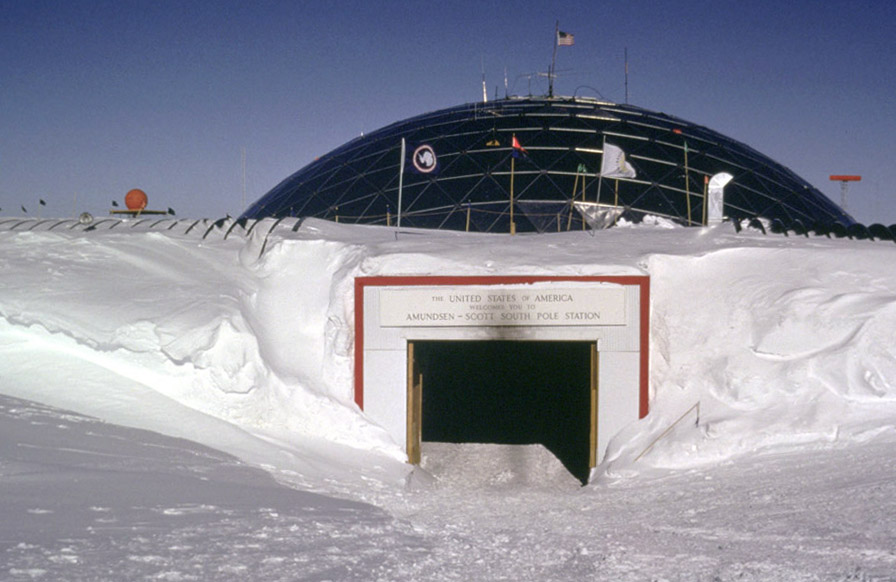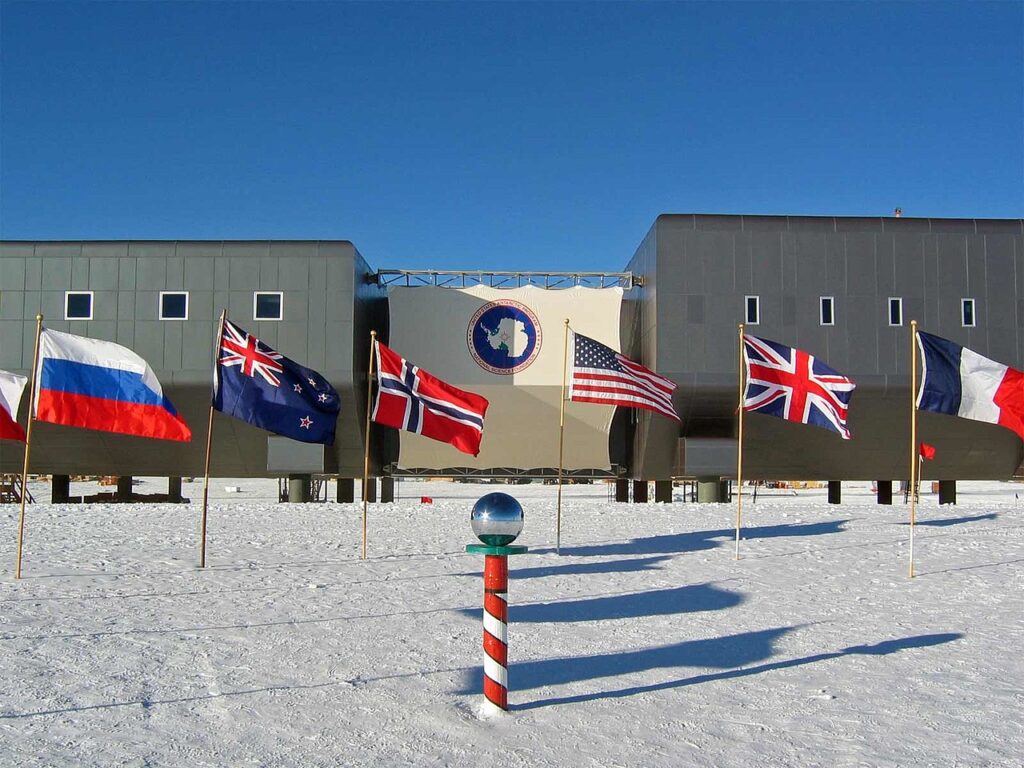
Amundsen-Scott South Pole Station – Learn Stuff
When I wrote the article about McMurdo Station, there was mention of the Amundsen-Scott Station at the South Pole. That’s a pretty interesting place in its own right, so let’s find out about the U.S. base in the middle of Antarctica.
The Admunsen-Scott South Pole Station (ASSPS) was built by the United States Navy at same time as McMurdo in 1956. It was named for Norway’s Roald Amundsen and Britain’s Robert F. Scott, who both led independent teams to be the first at the South Pole in the early 1900’s.
It is located at the geographic South Pole of the Earth, with six months of continuous daylight, and six of continuous darkness. Unlike McMurdo, which is set up like a town, the ASSPS is basically one big building that houses about 200 people during the summer and 50 during winter. That’s about a fifth of the personnel that are stationed at McMurdo.
The original station was completed in 1957. The components were pre-fabricated and airdropped by the U.S. Air Force C-124 Globemaster II. The South Pole only gets about 8 inches (20 cm) of snow annually, but it never melts. By 1975, the original building had been completely buried. It was replaced with a geodesic dome 160 feet (50 meters) across and 52 feet (16 meters) high that was built nearby.
After nearly 20 more years of snow accumulation, it was decided to build a new elevated station in 1992 at a projected cost of 150 million dollars. The new building would be 80,000 square feet (7,400 m2) over two levels. Construction began in 1999 and was officially dedicated in 2008. The entirety of the project was flown in on LC-130 Hercules aircraft from McMurdo. Each flight brought in 26,000 pounds (12,000 kg) per plane, with a total of 24,000,000 pounds (11,000,000 kg) of building material being transported. If you do the math, that’s 924 trips.
They probably could have brought all that in by truck at less expense, but the road between McMurdo and ASSPS wasn’t completed until 2007.
The dome from 1975 and what material remained of the original station was removed in 2010.
During the summer months, there are daily cargo and passenger flights from McMurdo by the New York Air National Guard 109th Airlift Wing. During the winter, the station in completely self-sufficient. When the station locks down for the half-year of darkness, it is tradition to binge-watch the three The Thing movies from 1951, 1982, and 2011. If you’re not familiar, those films are about being isolated at a research station and killed by an alien. Yeah, the people at ASSPS have some guts – or at least a macabre sense of humor.
The activities at Amundsen-Scott are primarily scientific, taking advantage of the unique geographic location. Studies include those in geophysics, meteorology, astronomy, and astrophysics – among others. It’s a great place for an observatory, and the Python, Viper, and DASI telescopes were previously housed there, replaced by the South Pole Telescope since 2007.
It may be one of the most remote places on Earth, but the South Pole Station is serviced by a large number of commercial, military, and NASA satellites for communication.
I thought McMurdo was pretty chilly, but it doesn’t hold a candle to the South Pole. The average low in winter (July) is -82.1° F (-63.4° C). The record low for the same time of year is -117° F (-82.8° C). Now that is cold.




































 GO PA!
GO PA! Learn Stuff
Learn Stuff Video
Video shop.kellyplanet.com
shop.kellyplanet.com


 Contact erickelly
Contact erickelly

Leave a Reply
You must be logged in to post a comment.